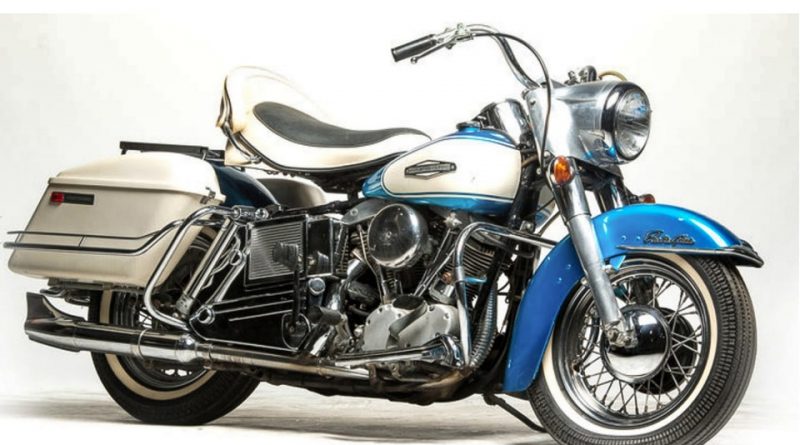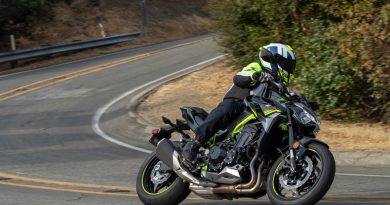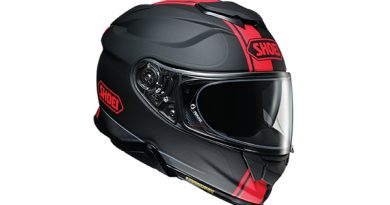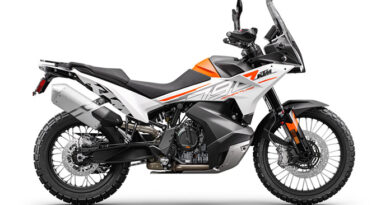The Harley-Davidson Shovelhead: Last of the Heads but History by the Shovel-ful!
Years in Production: 1966 – ’84.
Engine Size: 74ci and 80ci.
Horse Power: 60hp – 66hp.
What’s the Big Deal? Another great leap forward in engine technology during its production run, with alternators, cone-style timing covers, belt drive, the batwing fairing, and ‘chopper’ styling.
Famous Harley-Davidson Shovelhead Riders: Dave Barr, Bobby Labrie, Marion Owens.
Shovelhead Fun Fact: In 1977, Harley-Davidson launched a limited run of approximately 500 Super Glides and Electra Glides, featuring a Southern Cross paint job. The Motor Co called them the Confederate Edition.

Like the Knuckle and the Panhead before it, the first year Shovelhead was the same engine as its predecessor. Yet, it did have a different cylinder-head layout.
When it came to upping the power game stakes, the Big Twin’s cylinder head was always Harley-Davidson’s first port of call. And up it, they did. Instead of putting the 600-lbs Electra-Glide on a diet, by reconfiguring an alloy version of their successful XL Sportster head, Harley-Davidson coaxed another 10-percent of power out of the Shovel.
Over the decades, most newly launched models in the H-D line-up have ushered in a slew of innovations. And 1966 was no different. If anything, the Shovelhead, during its 18-year tenure, saw more giant leaps for Hog-kind than any other model.
Related: Enjoy the Harley-Davidson engine sound from 1903-2020 right here
Try these for size. The switch from generator to alternator transformed the shape of the right-side crankcase to the archetypal cone shape. Disc brakes appeared on both front and back. Even though the calipers chattered and the rear disc proved useless, they were both still a big deal.

The Shovelhead also heralded rubber-mounted engines, rear and primary belt drives, and five-speed gearboxes. Oil pumps were 30-percent more efficient. Add to this, the birth of ‘chopper’ styling and, most controversial of all, the introduction of Japanese carbs.
The King is Dead Long Live the King
Many of these milestones were spread throughout the bike’s entire production run. Once again, though, Harley-Davidson had managed to fire up a lot of biker interest. Not long after its launch, sales increased by an impressive 26-percent.
Unfortunately, like its predecessors, the Shovelhead wasn’t without its issues. The build-up of top-end heat was still a problem and a point not helped by the need to up horsepower via increases in cylinder head compression.
Difficulties due to circulating oil were also a headache for the Shovel. Unreturned oil would pool and work its way past the valve guides resulting in smoking exhausts. Furthermore, oil not scavenged fast enough collected at the bottom of the crankcases and caused wet-sumping. (See explanation in the video below)
This process compresses the oil as it squeezes between the crank and case, which slows the crank speed and generates excessive heat.
Wet-sumping explained real quick:
Big Changes for the Big Twin
While the worst was yet to come, at least the next two milestones weren’t the fault of the engine. The first arrived in 1969 when Harley-Davidson merged with American Machine and Foundry (AMF). The second was the fuel crisis of 1973, which wreaked all kinds of havoc.

AMF held the reins for a little over 12 years. Despite Harley purists often claiming this was the era that quality control went out to lunch, it’s impossible to ignore certain facts.
First of all, when bowling alley equipment manufacturer, AMF, stepped in to save the day, H-D was a mere oil change away from liquidation.
Secondly, it was also this period that saw the launch of the Super Glide. Ok, the hog buying public were somewhat underwhelmed by the ‘Boat Tail.’ However, the Super Glide and all its variants were some of Harley’s most iconic models.
Related: How to clean, condition and care for leather saddlebags

With Willie G in charge of the styling department, Shovelhead engines now powered bikes such as the FXWG Wide Glide and the FXB Sturgis. Plus, my personal favorite (and one of the many Harleys I regretted selling) the FXS Lowrider.
Finally, AMF invested in a new assembly plant. The plant in York, Pennsylvania, played a pivotal role in Harley-Davidson’s eventual return to the top.

The Next Yawning Chasm
Another big deal to affect the Shovelhead came when the USA found itself on the wrong side of an oil embargo. With the barrel price of oil increasing 300-percent, the knock-on effect turned the country on its ear.
How did this affect the trusty Shovelhead? By 1974, to conserve dwindling stocks of fuel, the quality and octane of gas at the pumps fell through the floor. The consequences for the Shovel were dire.
At the same time, the US attempted to cut down emissions by reducing the amount of tetraethyl lead in gasoline. This combination caused Shovel engines to knock like an overenthusiastic writ server.
Engine power faded, cylinder heads overheated, gaskets failed, and oil leaked. The Shovel’s reputation as a sturdy, reliable workhorse took a severe kicking.
AMF may have known their way around a balance sheet, but engineers, they were not. Their response to decreasing engine reliability being to increase production!
Knock Knock- Who’s There?
In 1976 the factory churned out a colossal 48,000 bikes. The engines still knocked, and fit, finish, and quality control went downhill. The result was even more disgruntled Shovel owners.
It became clear to anyone in the Motor Company who could hold a spanner, that if they were ever to get back on track, Harley-Davidson needed an all-new engine. Although a nonstarter, this idea did bring about two exciting results.
In 1978, in an effort to return the company to the top, designers started kicking around an idea for a brand new engine. Unfortunately, the engine would not fully (spoiler alert) evolve for another six years.
That same year also saw the introduction of the 80ci Shovel. First offered in the FL, the engine featured electronic ignition, higher compression pistons, and reworked intake manifolds.
Related: How to maintain your motorcycle chain

A new cylinder head design also meant that the engine could now
cope with unleaded gas. Despite the updates and modifications, the ’80’ didn’t produce more power but instead made the existing power more usable.
Buy Buy AMF
In what were without doubt very turbulent times, Harley-Davidson managed to keep going long enough for Willie G and his 12 buddies to stage a buyout in 1981. It wasn’t without a massive dose of irony, though.

Ironic Fact One; in 1968, two B-list celebrities asked Harley-Davidson to give them four Panhead engines to make a motorcycle movie. Not wanting to endorse pot-smoking, drop out, chopper pilots, Harley told them to Vamoose.
Three years later, in a bid to tap into the frenzy of pot-smoking dropout, chopper pilots created by the movie, Willie G designed the Super Glide.
Ironic Fact Two. In 1977, AMF refused to cough up development money for a much-needed new engine. Desperate to boost sales, Willie G turned to the parts bin. Here, he pulled out a Sportster rear fender and front end, Super Glide frame, and Electra Glide tanks.
Mass Produced Individuality at its Finest
Together with some fiendishly creative design cues borrowed from the drag strip, Willie G created the world’s first factory custom, the FXS Low Rider.
Mass-produced individuality had arrived, and by launching it halfway through the season, H-D beat the Yamaha XS 650 Special by six months.
The bike was an instant hit, outselling every other Harley model (I even bought one) and soaring sales went on to save the factory.
Together with the FXWG Wide Glide, the bike, which is now a design classic, changed the face of motorcycling forever.
Because of the FX’s mix and match ability, several different versions followed. Although at that point the Shovelhead has gone about as far as it can development-wise, Harley still had one last hoorah up their leather jacket sleeve.
In 1981, the FXB Sturgis hit the showroom floor. The bike was a nod to the gargantuan free Harley-Davidson advertisement, sorry, rally, held in South Dakota, and the ‘B’ relates to final and primary belt drive.
Related: TOP-10 Retro Motorcycle Helmets
Related: TOP-10 Retro Motorcycle Gloves

As mentioned earlier, 1981 saw AMF head back to the bowling alley, when 13 investors, including Mr. William Godfrey Davidson, bought back the company.
This intervention restored faith in the brand. Extensive use of just In time parts ordering to save on inventory costs, together with job cuts, meant the Motor Factory kept its head above water – just.
Although the 80ci Shovelhead engine and the FX range were winning plenty of new friends, the company was still in a dire financial state. A fact confirmed when AMF offered the company for sale the year before the buyout.
One Step Away from Asset Strippers
Not one single buyer came forward, which means that it would most likely have been sold to asset strippers. This was precisely what was going to happen in 1969 when AMF stepped in.
With veteran businessmen Vaughn Beals (CEO) and Rich Teerlink (COO) at the helm, the ship turned moments before it went over the waterfall. Having the grandson of the founder in charge of design didn’t hurt either.
The Shovelhead continued to carve out a legend for itself right up until 1984. At which point, the top-secret engine Harley had dragged its heels developing, finally burst onto the scene. That, of course, is another story.
The Shovelheaders Hall of Fame
No article on the Shovelhead would ever be complete without a nod to those eccentric individuals who helped make the bike great. These three men are all heroes in their own right.
In very different ways, they took a 60 horsepower Overhead Valve, V-Twin, to the kind of extremes its creators in Milwaukee couldn’t even imagine.
Dave Barr- Fearless Adventurer
Ex-Vietnam veteran, Dave, lost both his legs to a landmine in 1981 while serving in the South African army in Angola. Instead of ending his life, the incident gave it an unlikely kickstart.
Nine months in a fly-infested military hospital and 20 major surgeries later, Dave made it back stateside. Together with his dad, he dusted off the Shovelhead, bought in 1972, and kitted it out to suit his needs.
Dave Barr headed for the horizon with an electric start, knobbly tires, adapted brake pedal, and two prosthetic legs.
Three and a half years, 83,000 miles, and six continents later, Dave Barr became the first double amputee to complete a circumnavigation of the globe on a motorcycle.
Learn all about the H-D Twin Cam engines right here

To date, he is also the only person to achieve this riding a Harley. The fact that he did this on a 1972 Shovel on which he’d already clocked up 100,000 miles is mind-blowing.

For an encore, Barr rode a Sportster across Northern Europe and Siberia in the winter to set another world record. A four-corner ride of Australia provided yet another record-breaking ride. This achievement resulted in Dave Barr’s induction into the Motorcycle Hall of Fame in 2000.
Bobby Labrie’s Triple Mystery
A graduate of H-D’s Milwaukee service school, Labrie went on to work in his father’s New Hampshire Harley-Davidson Dealership. Setting up his own shop in 1973 in a two-car garage in Concord, NH, Labrie’s reputation as a talented Harley engineer spread.

Recognizing the real deal when he saw it, Dick Obrien, director of Harley’s racing arm, sent factory XR-750’s to the garage to be set up for local races. But this is not the reason Labrie makes it into our Shovelhead role of honor. He earns his place because he was the first to build a three-cylinder Harley engine.
In a small, dimly lit, two-car garage and using only basic machinery, Bobby Labrie took an ’82 FXE and grafted an extra cylinder onto the crankcase. Say it quickly, and it sounds easy, but consider the amount of mind-boggling work that went into this!
Not only did the technical aspects of conrods, crank, cams, and timing have to be overcome, but also the machining and fabrication. These included a 3-1 intake manifold, an exhaust system, and the wishbone frame tubes from a Panhead to enable the extra cylinder to poke through.
How Labrie achieved the build is still a mystery. Plus, the bike (which still fires up today) has not once been taken apart. There are two anecdotes attached to his motorcycle though, that enhance the legend perfectly.
The first concerns some high-up ‘suit’ from Harley-Davidson, who walked into the workshop holding a big cheque. Demanding to know the build details and insisting Labrie sell him the bike resulted in Bobby telling him to get lost.

The second incident took place at the Harley Rendezvous Show in 1982 when some idiot insisted that the front cylinder was a dummy. Bobbie told him to grab hold of the front header pipe to check. Needless to say, this naysayer couldn’t shake hands for a while.
Marion Owens and the Big Bang Theory
So far, both of our Harley heroes have pushed their Shovels to extremes, and Owens fits that profile perfectly. One of drag racing’s greats, ‘Big Mo,’ believed that gas was for washing parts, alcohol for drinking, and nitro for drag bikes.
The ten-time, national, top-fuel winning drag racer was onboard his fire breathing twin-engine Shovelhead in October 1978. It was business as usual as he got ready for another record-breaking run.

Pushing the 628-lbs monster to the back of the burnout pit, buddy and fellow racer Elmer Trett and Big Mo prepared to wake the beast. Little did they know they were moments away from an event known to this day as ‘The Big Bang.’
Owens stretched out across the top of the nitro-methane fueled double engine Shovel while Trett leaned his weight against the fork legs to steady the bike as it fired up.
Marion Owens lit the fuse, and a split second later, both men became engulfed in a fireball as the bike erupted.
All four-cylinder heads exploded simultaneously, snapping all their head bolts and retainers and lifting them clear of the cylinders. The force of the explosion broke the backbone of the frame and flung bits of red-hot Shovelhead across the pit.

Both men miraculously escaped with singed eyebrows, but the bike was totaled. In the act of true friendship, Trett gave Owens parts from his own top fuel bike ‘Daddy Zeus’ to help with the repairs. Unbelievably, Marion Owens was back on the drag strip one week later.
Harley-Davidson Shovelhead FAQ
What is the highest price ever paid for a Shovelhead?
Less than a year before Elvis Aaron Presley died, he bought what would be his last Harley Davidson. The bike was a ’76 H-D FLH 1200, that he had delivered to Graceland. The bike recently went for $800,000 at auction.
What is the most collectable Harley-Davidson Shovelhead?
The most rare H-D Shovel and therefore the most collectable is the 1981 FXS Low Rider limited edition. Just 14 were made for the 13 executives that bought the company back from AMF plus one for John Davidson.
Are Shovelhead engines reliable?
Properly maintained with regular oil changes and some TLC, Shovelhead engines can clock up high miles. Just ask Dave Barr, he did over a quarter of a million miles on his.
Why are they called Shovelheads?
Apparently Harley owners way back in 1966 thought that the cylinder head looked like an upside-down coal shovel.
What a stock Harley-Davidson Shovelhead sounds like:
The post The Harley-Davidson Shovelhead: Last of the Heads but History by the Shovel-ful! appeared first on Old News Club.




